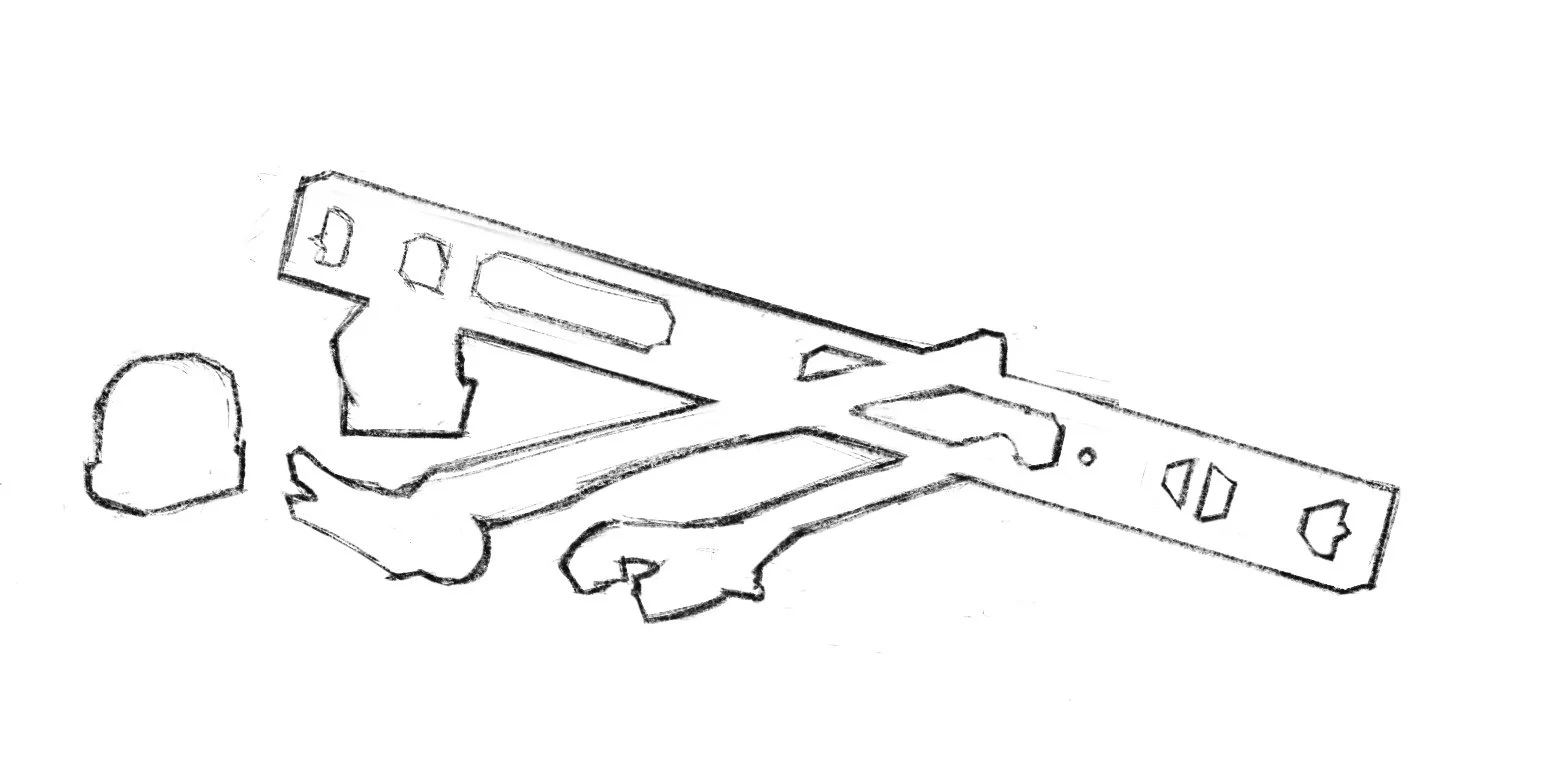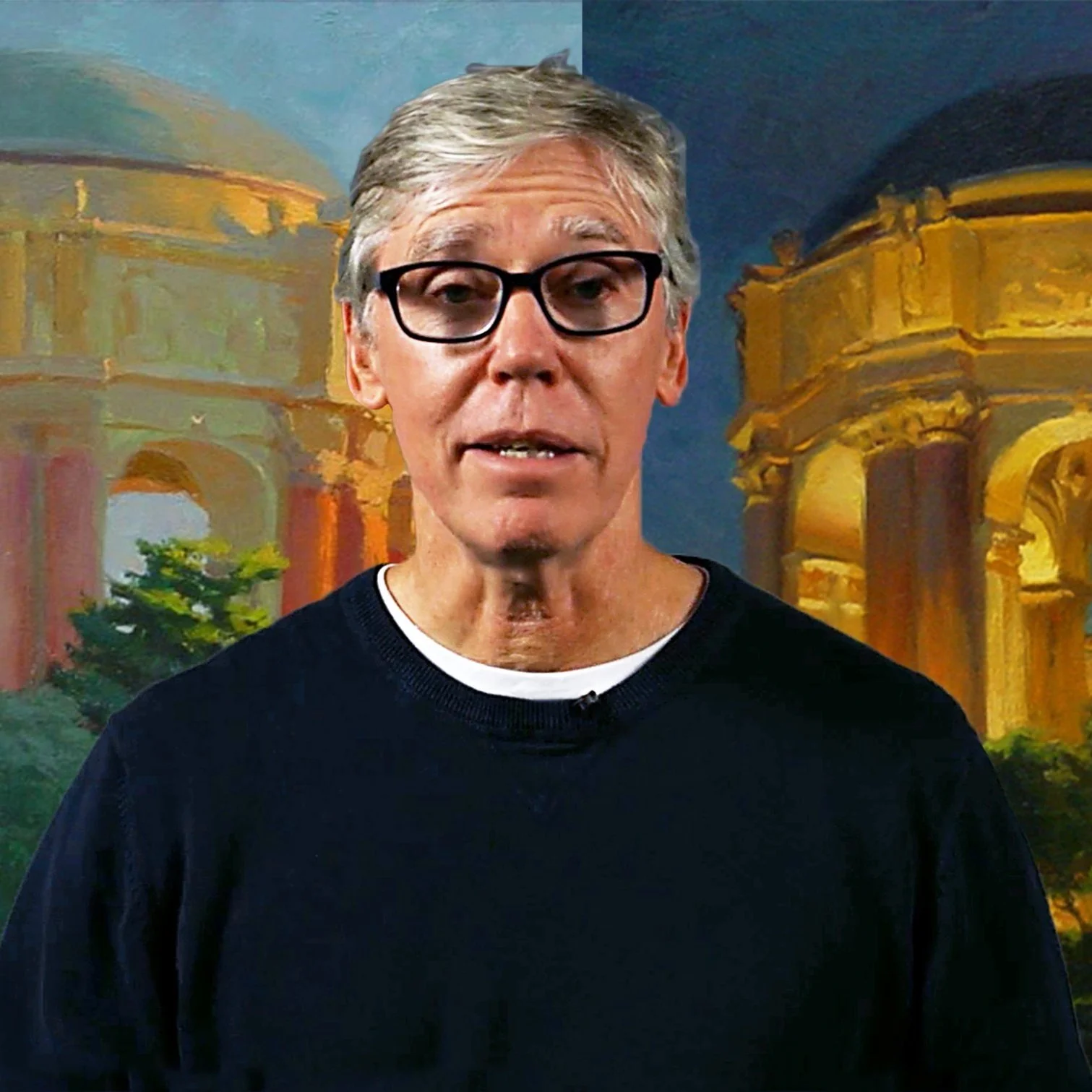Negative Space - Day 4 of Master Mash
Demo image from the pre-recorded course Fundamentals of Perspective and Drawing with NMA instructor and Coach, Renae Wang.
The Essential Foundation of Shape
As we journey through this week, we continue to delve into the multifaceted theme of "Shape" in the realm of art. The world of artistry is not just about what is evident; it's also about what is left out, the spaces in between, and the areas often overlooked. This brings us to a vital and sometimes underappreciated concept in art: negative space.
Negative space refers to the empty or open spaces around and between the subjects of an image. It might sound simple, but the power of negative space is vast. It's the silence between the notes in a song, the pauses in a narrative, or the sky surrounding a bird in flight. When used effectively, negative space can bring balance to a composition, emphasize the main subject, and provide visual relief. It's a counterpoint to the positive space, which typically holds the main subject of the artwork. Together, they interact in a harmonious dance, with negative space often defining and enhancing the positive.
Today's prompt invites you to shift your perspective and see the unseen. With "Negative Space," we challenge you to not just focus on the main subjects in your compositions but to give equal importance to the spaces around them. Recognize it, play with it, and use it to your advantage. By giving negative space its due attention, you can unlock new dimensions in your artistic endeavors and create compositions that are both balanced and captivating. Join us in this exploration and discover the profound impact of what's "not there" in your artwork.
Demo image from the archived Live Course Fundamentals of Perspective and Drawing (2022) with NMA instructor and Coach, Renae Wang.
Negative Space
Negative space, at its core, is the unoccupied area or empty space in an artwork that surrounds the main subject, often referred to as the positive space. While it might seem passive or secondary, this "empty" space is anything but. It actively defines and enhances the main subject, much like a frame emphasizes a picture.
Negative space plays a significant role in the realm of art. It can be wielded to create emphasis, drawing the viewer's eye directly to the main subject. It adds balance, ensuring that an artwork doesn't feel overcrowded or chaotic. Moreover, it introduces contrast, allowing the primary elements to stand out more vibrantly against their surroundings.
When artists harness the power of negative space, they tap into a tool that offers depth, dimension, and clarity to their work. By intentionally choosing what to leave out or where to allow breathing room, artists guide the viewer's experience, creating a visual journey that's both engaging and harmonious. So, with today's prompt, "Embracing Negative Space," let's dive deep into this silent yet profound aspect of art.
In the dance of design, negative space is the pause between steps, giving rhythm and meaning to the whole performance.
Demo image from the archived Live Course Fundamentals of Perspective and Drawing (2023) with NMA instructor and Coach, Renae Wang.
Ideas on How to Approach the Prompt
When diving into "Embracing Negative Space," it's pivotal to begin with an understanding of the dynamic between positive and negative spaces. With this knowledge, you can effectively harness the power of emptiness and make your main subjects stand out more distinctly.
Start With Recognizing Positive Space: Begin your artistic journey by identifying the primary subjects or positive spaces in your compositions. These are the areas that usually capture immediate attention.
Identify Negative Space: Once you've pinpointed your positive spaces, turn your attention to the areas around or between them. This is the negative space, and it's as crucial as your main subject. It's about looking at what isn't there as much as what is.
Use Negative Space to Enhance Focus: Intentionally craft the negative space to guide the viewer's eye and enhance the central theme or subject. This could mean simplifying backgrounds or using emptiness to frame and emphasize a subject.
Experiment with Balance: Play around with the proportion of positive to negative space. Sometimes, a vast expanse of negative space can make a small subject incredibly powerful. At other times, a delicate balance can create harmony in a piece.
Silhouettes and Simplification: Use negative space to create strong silhouettes or simplified forms. By removing intricate details and focusing on the broader shape, you can make compositions more striking and memorable.
Real-life Observations: Spend time observing how negative space operates in real life. For instance, notice the sky framing the branches of a tree, or how the space between buildings shapes a city skyline. Try to incorporate these observations into your art.
Advanced Challenge - Evoking Emotions: Explore how negative space can evoke emotions or tell stories. A vast emptiness can evoke feelings of loneliness, while a clever use of space can create a sense of mystery or surprise. Challenge yourself to communicate emotions using as little detail as possible, relying heavily on negative space.
Recommended Course Insights
Inspirational Image Collections
In the vast expanse of artistic expression, there lies a quiet strength in the spaces we often overlook: the negative space. This seemingly empty canvas holds the power to transform a composition, adding depth and dynamism even in its absence. Just as silence in music can speak volumes, negative space in art has the potency to evoke emotion, tell a story, or magnify the essence of a subject.
Embracing and mastering the use of negative space is not just about creating voids but understanding the balance and relationship between what is and isn't present. The interplay of filled and unfilled spaces makes art come alive, creating a dance of visuals that can capture the viewer's attention and imagination.
As we journey together through this Masterful October challenge, it's imperative to not only embrace the techniques and lessons but to share our individual interpretations and insights. Your unique take on negative space could become someone else's inspiration. So, share your creations, your epiphanies, and the moments where the unseen became the undeniable focus in your art. Use the hashtags #MasterfulOctober and #pathtomastery to join this communal voyage into the depths of artistic expression.
Stay tuned for tomorrow's prompt, which promises to take our exploration to new dimensions, pushing our boundaries and challenging our perceptions once more. The artistic journey is ever-evolving, and with each new day comes a fresh perspective. Dive in, explore, and let the canvas be your guide.











